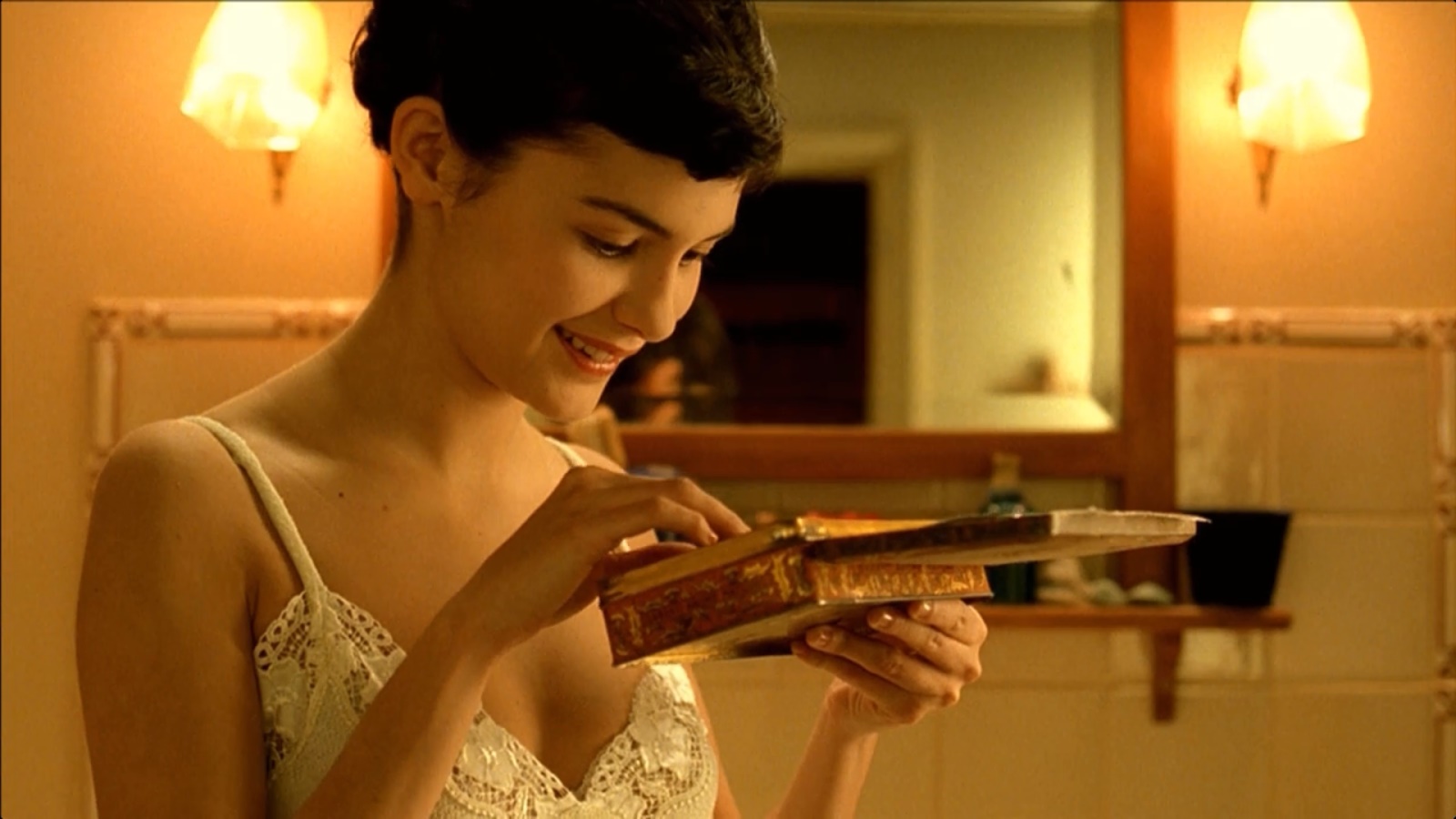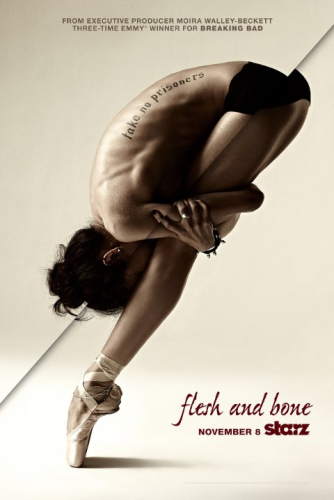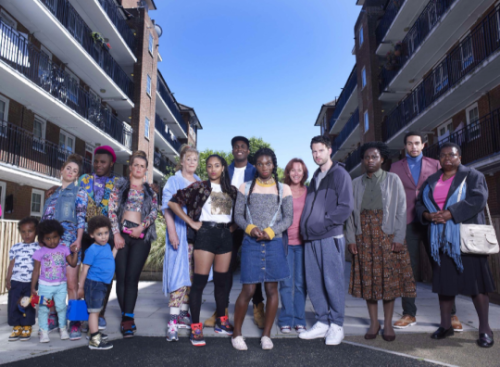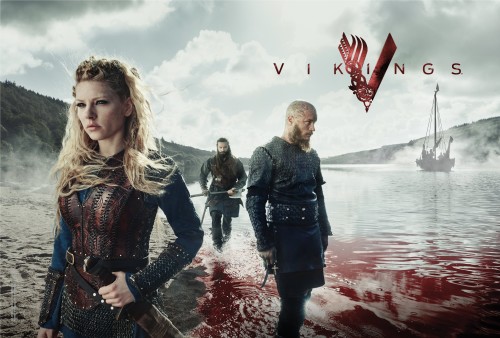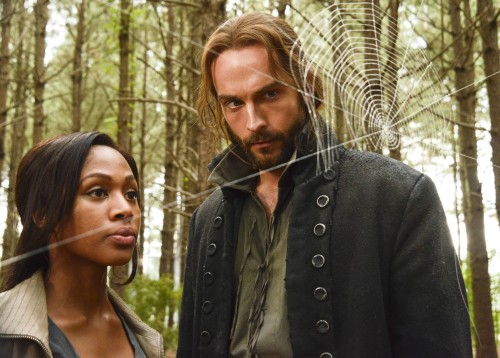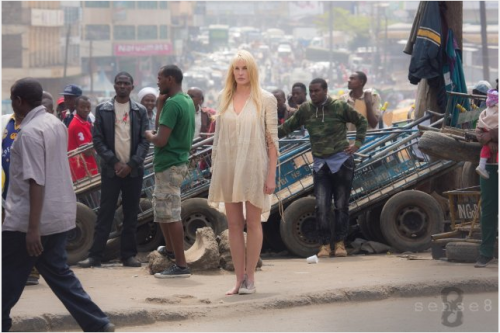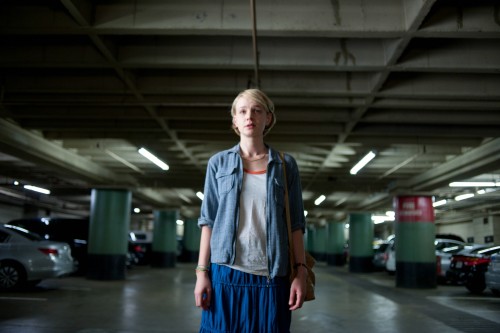This guest post is written by Giselle Defares.
The idea of love, chance and destiny – the cause and effect relationship – are themes that frequently occur in our cinematic history. For most of us, love is the strongest emotion that we know, an emotion that can entail powerful forces. In Amélie, love and happiness are hidden in the mundane things of life. Or in the case of Amélie, it’s putting the tip of her spoon on the caramelized layer of sugar on her crème brûlée.
“To ask one of these kinds of newspapers in Paris to love Amélie is like asking the Pope to put on a condom. They hate these kinds of movies.” This quote from the French director Jean-Pierre Jeunet, reflects the controversy, at that time, surrounding Amélie. This extravagant romantic film was loved around the world except within the French film establishment. The interview took place in May 2001 and it appears Jeunet’s comments possessed a kernel of truth because the Cannes Film Festival refused to put Amélie in the official selection.
The self-taught director Jeunet is known for his astonishing visuals – see also his specific mise-en-scène, heavy use of color, CGI and voice-over narration. He took a light-hearted approach with Amélie instead of the inaccessible and often gloomy atmosphere of his earlier films such as Delicatessen and The City of Lost Children. It starts with the opening scene where you’re bombarded with trivia and funny facts. Jeunet’s style is reminiscent of the prologue of Paul T. Anderson’s Magnolia or Tom Twykers’ Run Lola Run. Amélie became a worldwide box office success and also earned five Oscar nominations.
Amélie centers around Amélie Poulain (Audrey Tautou), a sensitive young woman, who after the death of her mother has withdrawn into her own fragile world, where the smallest pleasures of life are her priority. She works as a waitress in a corner bistro, until the day that Princess Diana dies in a car crash and everything changes. The shock of the news causes Amélie to drop a bottle cap, which unlocks a stone in the wall of her apartment, which leads her to discover a very old box in which a young boy used to hoard his treasures. Amélie tracks the boy – now an older man – down, and in returning his old, rusty box, Amélie finds her reason to live. She will make people happy in extraordinary ways.
Most of the scenes are shown in chronological order but there are several smaller storylines and flashbacks interwoven. Jeunet has an interesting way of playing with dialogue in the film. Amélie often loses the ability to properly communicate in important moments. The overarching role of the omniscient narrator — the key link between various scenes and sequences — becomes more important. The narrator continuously informs the viewer of Amélie’s personal thoughts and feelings.
Whether or not it was the intent of Jeunet, Amélie can be seen as the female representation of a Christ figure in a modern tragedy. In Bible and Cinema: Fifty Key Films, Adele Reinhartz gives two basic criteria that a movie character must meet in order to be seen as a Christ figure:
“That there be some direct and specific resemblance to Christ (though a full replication in every detail is not essential); and that the fundamental message associated with the possible Christ-figure has to be consistent with the life and work of Christ, and not contrary to his message about liberation and love.”
Amélie’s love, like that of Christ, is selfless and knows no boundaries. A representation of this point can be seen when she appears in several scenes in a Zorro costume. She disguises herself in order to help the people in her community. This is evident when she intervenes in the bullying of Lucien, who is monoplegic, as well as helping a blind man crossing the street. In that sense, Amélie is altruistic and doesn’t hesitate to help other people.
Several religious references occur in the dialogue. Dominique Bretodeau, the man who’s reunited with his rusty box of childhood treasures, calls Amélie an “angel” and states that she must be his “guardian angel.” Throughout the film, Amélie’s actions are referred to as a miracle. It’s important to note that her actions often leave the person confused as if an “outside or divine force” has intervened in their lives.
The turning point in the film is the sequence where Amélie views a memorial broadcast of her own death on television where she’s shown as a nun, washing the feet of the blind man, next to the Sacré-Coeur Basilica. This is similar to the moment that Jesus washed the feet of his disciples – an act of love and humility. The narrator later calls her in that moment the “Madonna of the unloved.”
The memorial scene functions as a symbolic death, since Amélie is still alive afterwards. She was afraid that her life had no more meaning after she accomplished everything she wanted. The narrator then states, “As she went, she felt a stab of regret for letting her father die without trying to give his stifled life the breath of air she had given to so many others.” Thus, she’s revived again knowing that her task is far from fulfilled, and that others closest to her, such as her father, require help as well. This leads to the moment where Amélie visits her father’s house and takes his garden gnome, who she uses for her good deed towards him.
Aforementioned, color plays an important role in the visual style of Jeunet and that’s certainly noticeable throughout the film. Jeunet manipulated and used various grading of color. The saturated color palette of the film – red, green and yellow are dominant – reflects the happy feelings of Amélie. Often colors clash when Jeunet chose sepia tones and black and white, which signals intrusion in the lives of the characters. The use of CGI is most noticeable when it comes to Amélie’s imagination – see the visualization of her loneliness via an animated crocodile or Amélie’s “sacred heart.”
In Jeunet’s portrayal of Amélie’s “sacred heart,” a clear parallel exists with Christian iconography. The Most Sacred Heart of Jesus is a Catholic icon which represents the love of Jesus Christ. It’s often portrayed as a human heart surrounded by flames. Amélie’s heart is displayed in a bright yellow and orange glow which clearly draws on the connotation of the sacred heart of Jesus Christ. The cinematography in this particular scene is interesting since Jeunet breaks a shot – a reverse shot between Amélie and her crush, in order to show the heart of Amélie but resumes afterwards. Thus his cinematography breaks with what you would expect and leads the viewer’s gaze towards the heart.
Tautou is phenomenal in her role as Amélie and she deservedly received several award nominations (including a BAFTA Award and César Award) for her portrayal. She truly carries the film and has great chemistry with all the other characters. Admittedly, the storyline is quite thin and some characters feel like cardboard cutouts, but Tautou saves the film with her doe-eyed likeableness.
Initially it seems that Amélie is content in her role as anonymous benefactor, whilst secretly crushing on the shy Nino – who collects photos from automated photo booths people don’t want; as you do. Until, an old neighbor tells her: “You don’t have bones of glass. You can take life’s knocks. If you let this chance pass, eventually, your heart will become as dry and brittle as my skeleton.” The call to embrace life to its fullest is original, playful and engagingly filmed by Jeunet. A charming film with lots of heart, even the most stoic viewer would succumb to the magic of Amélie.
https://www.youtube.com/watch?v=lrlQR_KH_nw
Giselle Defares comments on film, fashion (law) and American pop culture. See her blog here http://zilvertong.tumblr.com/ or follow her on twitter at @zilvertong.

